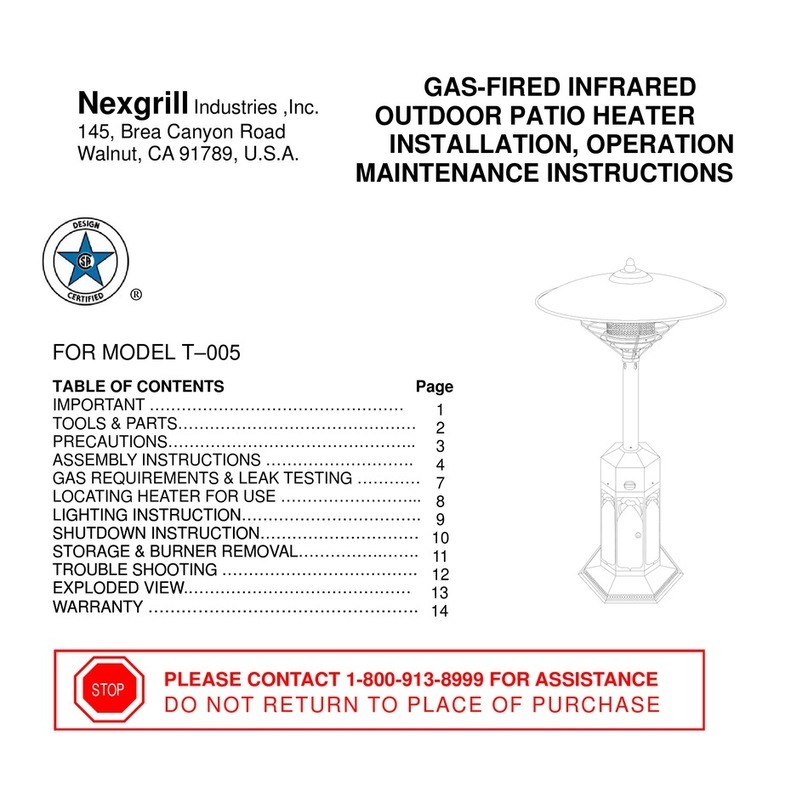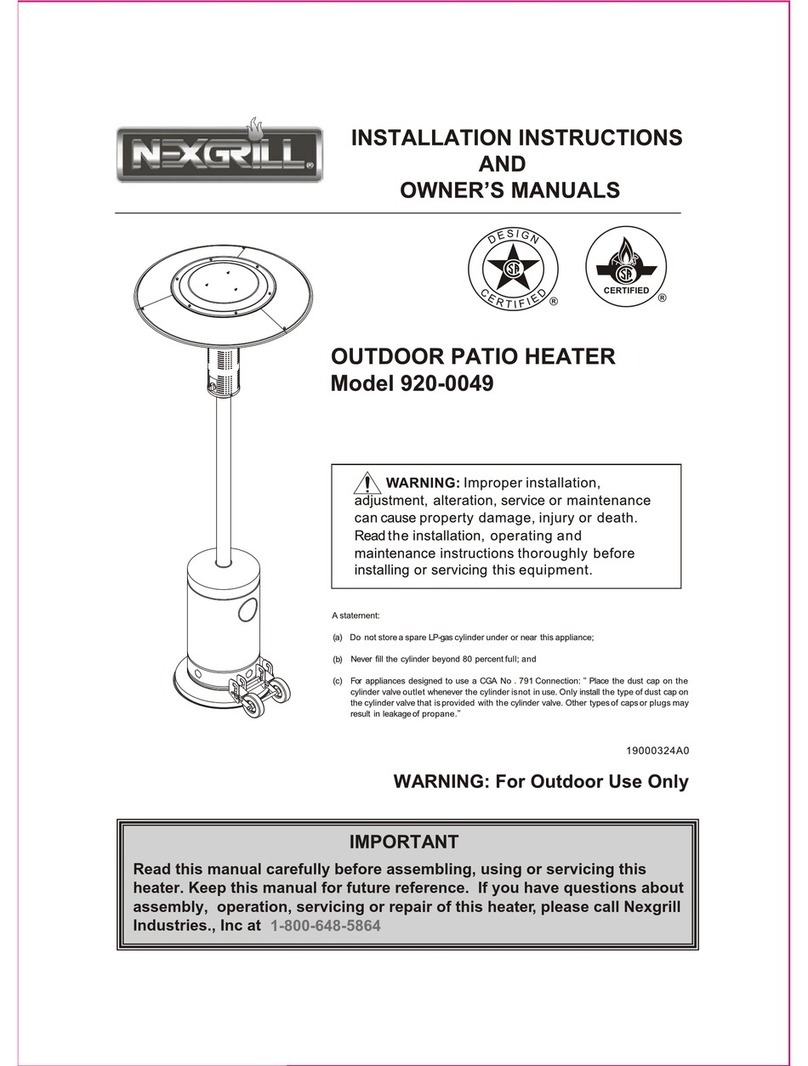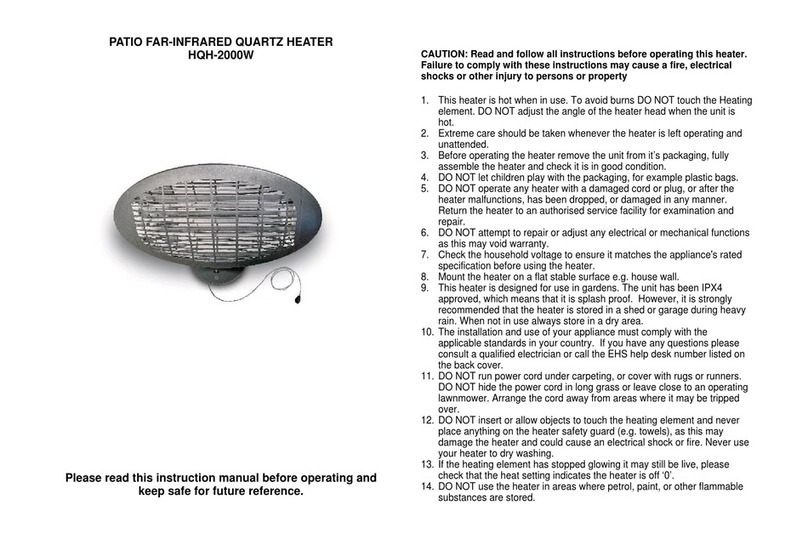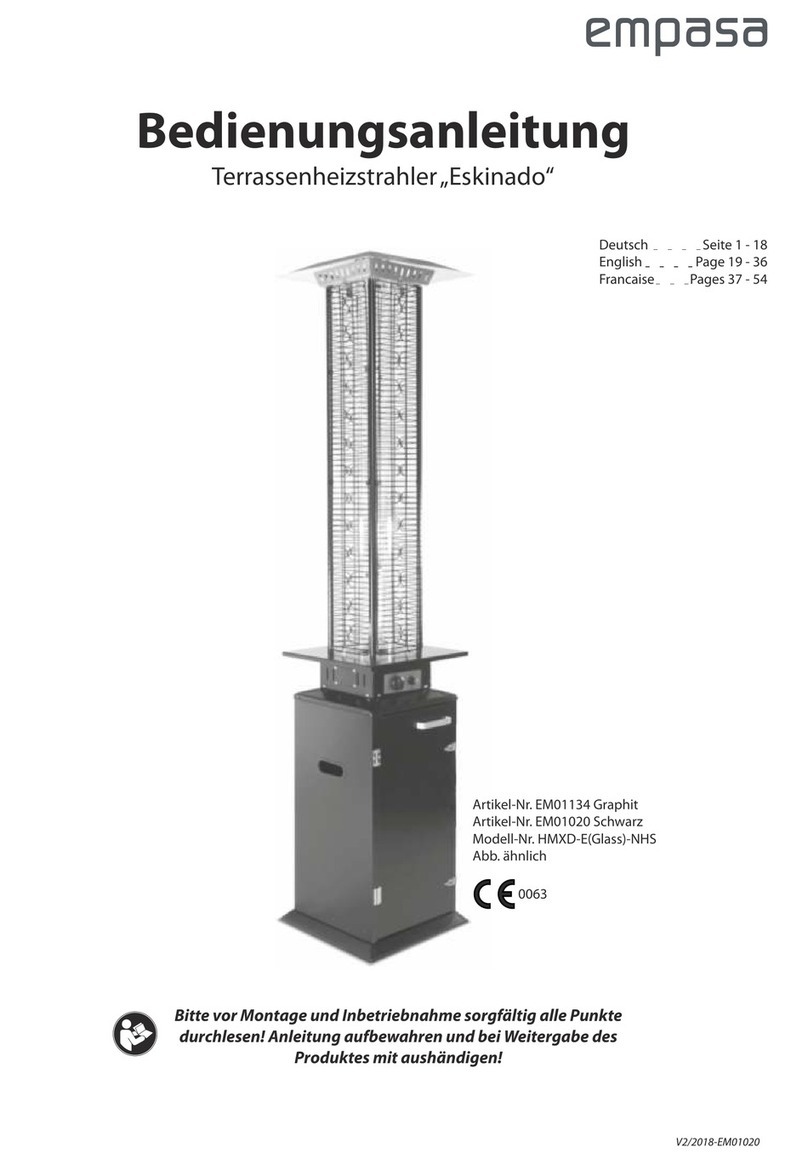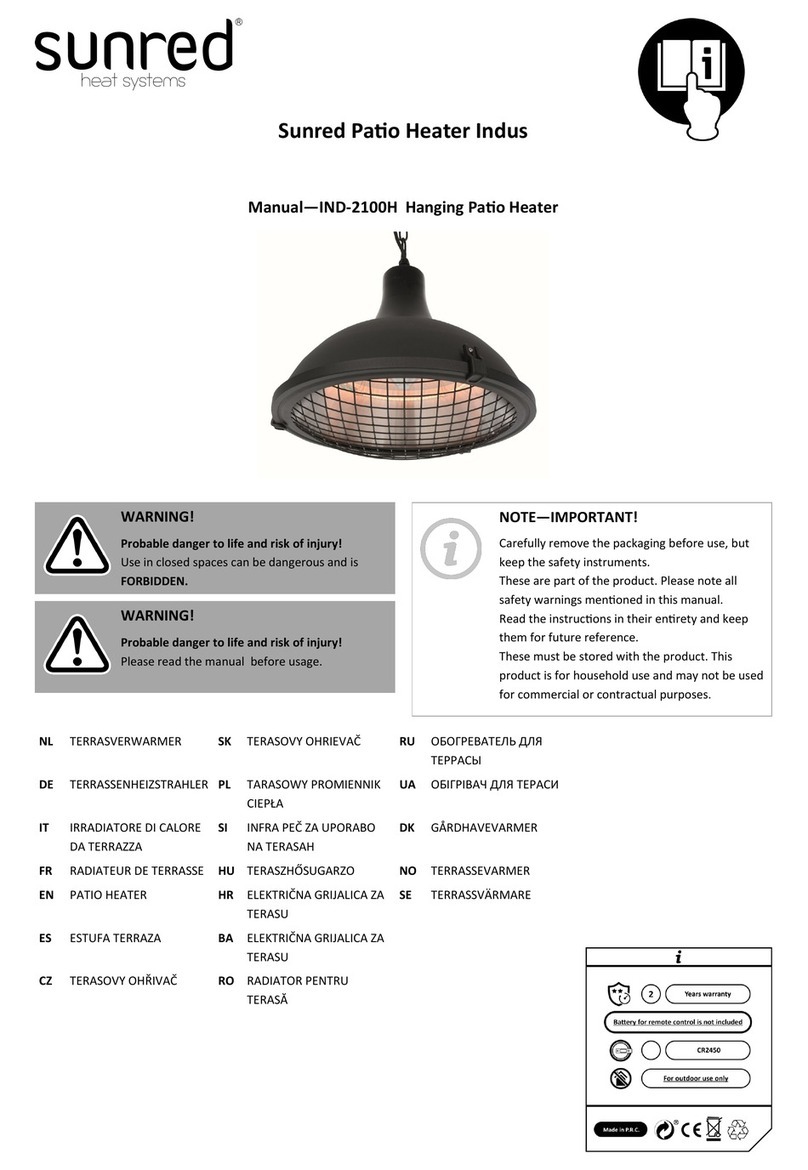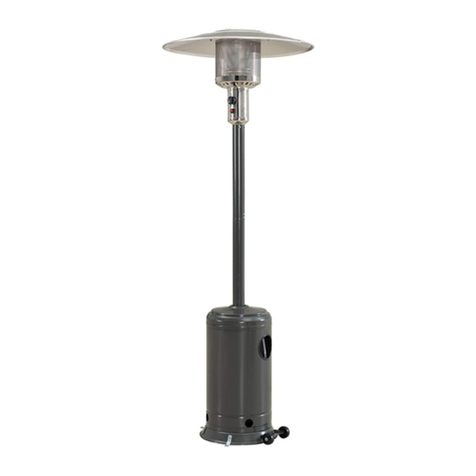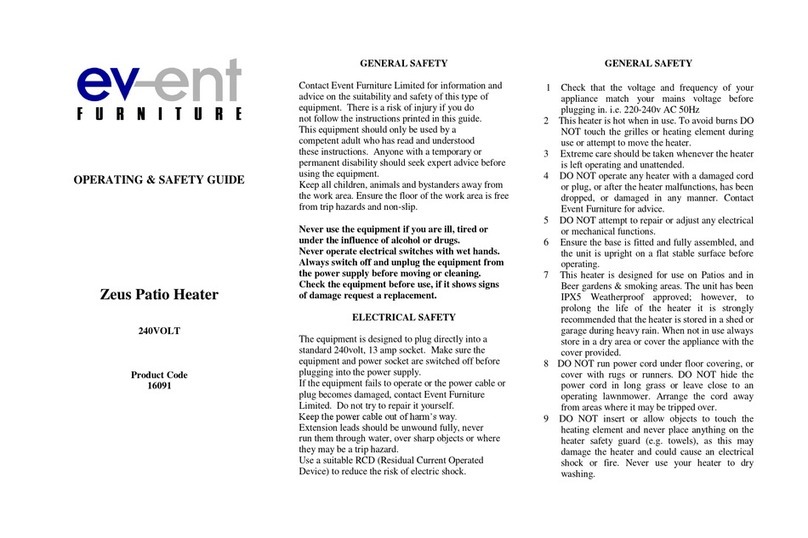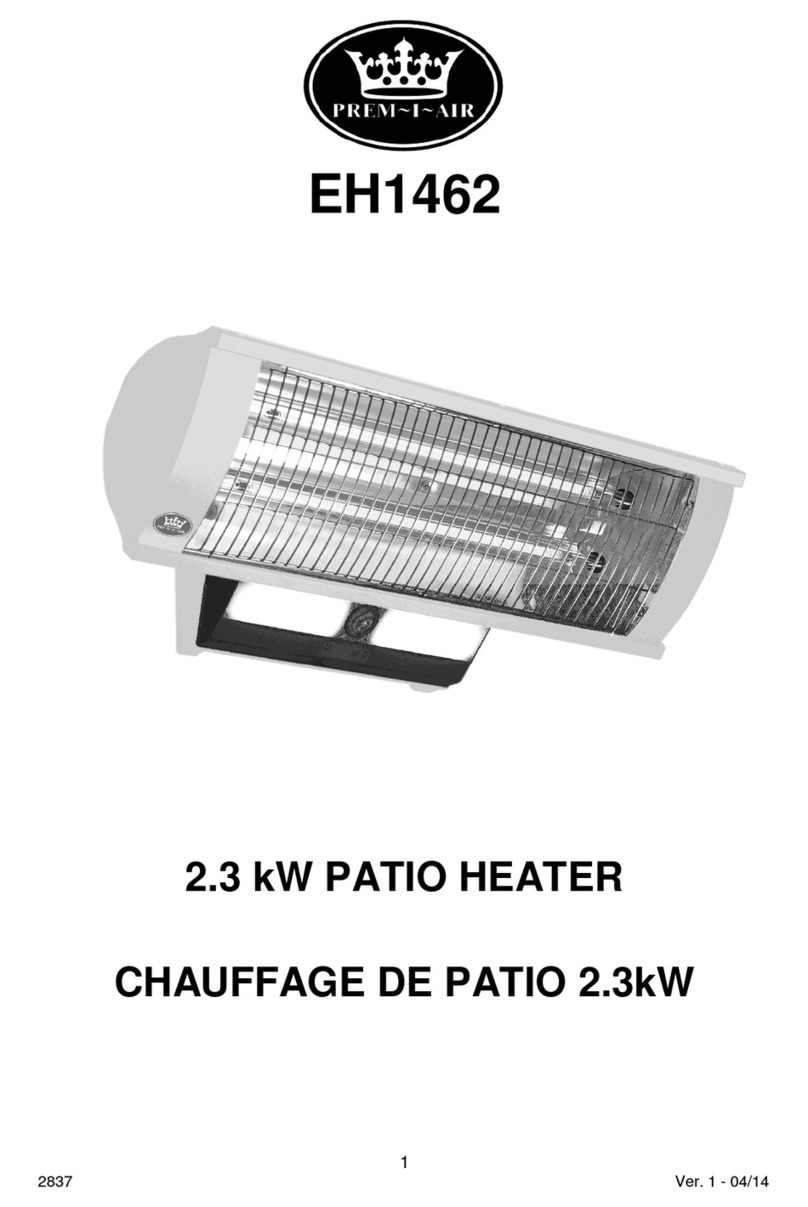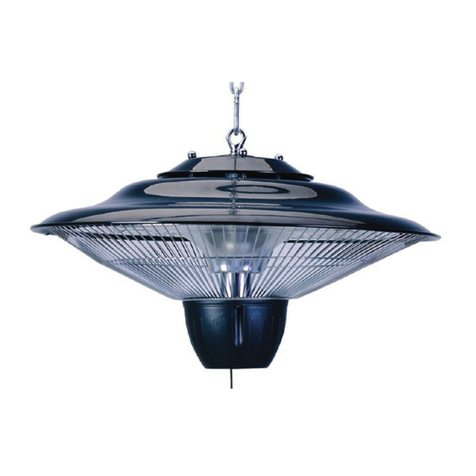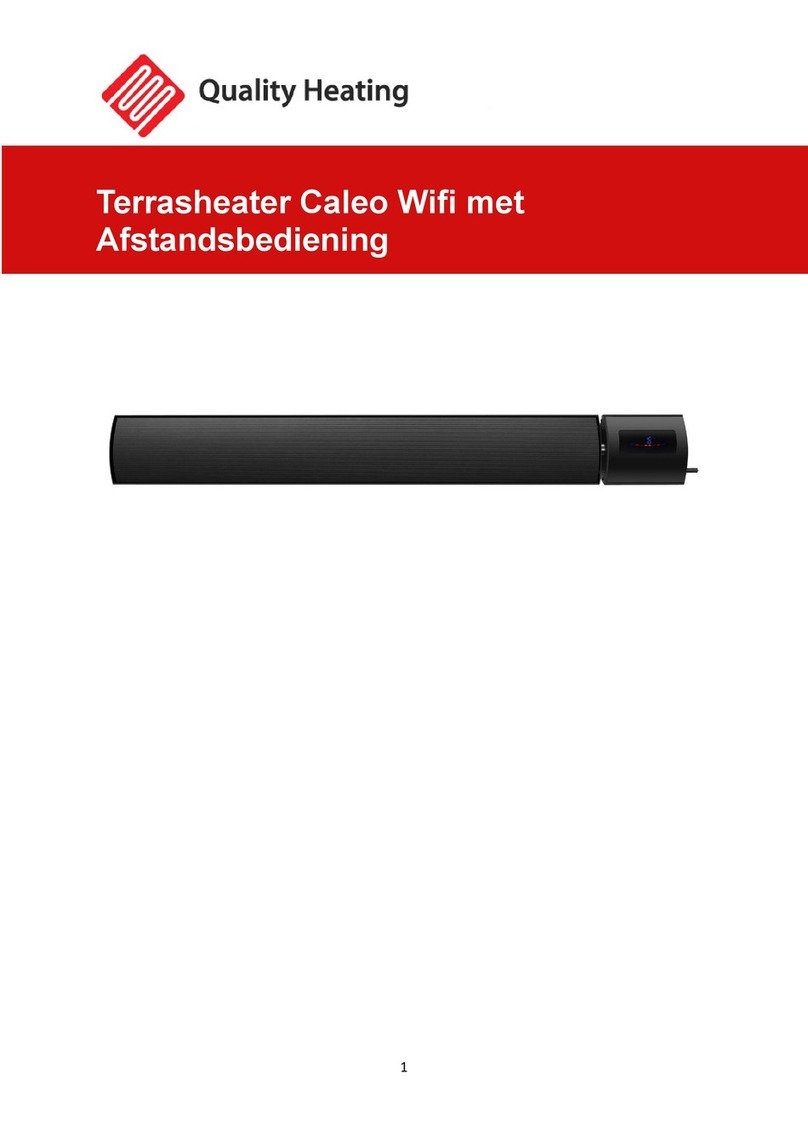GAS REQUIREMENTS & LEAK TESTING
NEVER CONNECT AN UNREGULATED GAS SUPPLY TO THE HEATER
PRECAUTIONS
§Periodically check the whole gas system for
leaks or immediately check if the smell of gas
is detected
§Extinguish all open flames.
§Never leak test while smoking.
§If you cannot stop a leak, turn off the gas
supply and call the Customer Service hotline,
the dealer where you made the purchase or
your gas supplier.
§The heater must be checked with a full
cylinder.
§Do not use the heater until all connections
have been leak tested and do not leak.
§Only those parts recommended by the
manufacturer should be used. Substitution will
void the warranty.
GAS REQUIRMENTS
§Maximum inlet pressure to propane
regulator must not exceed 100 PSI.
§A minimum supply pressure of 11.0 W.C. is
required for the purpose of input adjustment
for propane gas. Manifold pressure should be
maintained in 10.0 inch W.C.
§The pressure regulator and hose assembly
supplied with the appliance must be used.
Replacement pressure regulator and hose
must be specified by the appliance
manufacturer.
§The heater comes equipped with a hose
assembly for hook-up to a standard 20LB
propane cylinder ((18-1/4” high, 12-1/4”
diameter). The propane tank is not included.
§A dented, rusted or damaged propane tank
may be hazardous and should be checked
by your tank supplier. Never use a propane
tank with a damaged valve connection.
§The propane tank must be constructed
and marked in accordance with the
specifications for LP gas cylinders of the
US Department Of Transportation (DOT)
§The propane tank must be arranged to
provide for vapor withdrawal from the
operating cylinder
§Never connect an unregulated
propane tank to the heater
LEAK TESTING
§Gas connections on the heater are
leak tested at the factory prior to
shipment. A complete gas tightness
check must be performed at the
installation on site due to possible mis -
handing in shipment or excessive
pressure being applied to the heater.
TO LEAK TEST
§Make a soap solution of one part liquid
detergent and one part water. The
solution can be applied with a spray
bottle brush or rag. Soap bubbles will
appear where a leak is present
§Make certain the safety control valve
is in the ‘OFF’ position
§Turn the gas supply ‘ON’.
§If a leak is present turn ‘OFF’ the gas
supply, tighten any leaking fitting, turn
gas supply ‘ON’ and recheck.
§The gas supply must be turned off
at the LP-gas supply cylinder when
this appliance is not in use.
9

